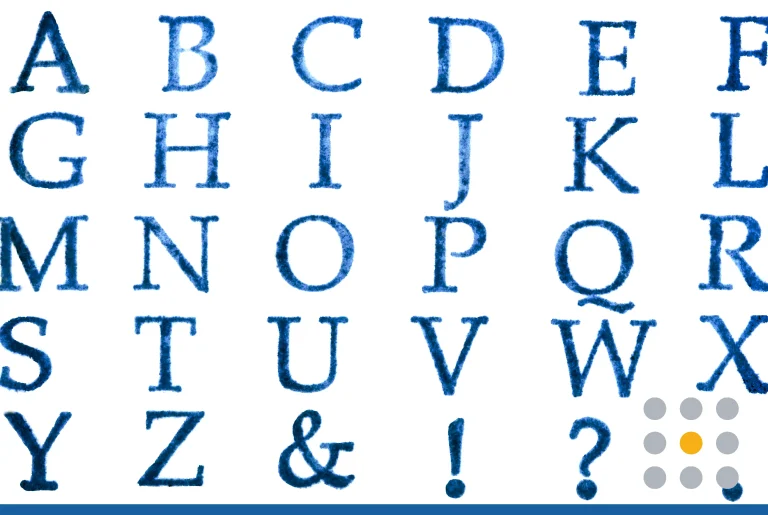Let’s be real—naming your blog can feel like naming a pet dragon. It has to be original, memorable, and say something about you (without breathing fire on your audience). New bloggers often struggle to find the best blog names.
But don’t worry. Whether you’re starting a personal blog, food blog, travel blog, or building the next digital photography school for lifestyle bloggers, you’re about to become a Blog Naming Wizard. In this article, we’ll cover various strategies for coming up with the best blog names.
Let’s dive in.
- Why Your Blog Name Matters More Than You Think
- Step 1: Define Your Blog Niche & Content
- Step 2: Get Inspired by Other Bloggers
- Step 3: Brainstorm Blog Name Ideas
- Step 4: Use a Blog Name Generator (But With Caution)
- Step 5: Consider Your Domain Name
- Step 6: Check for Originality – Protect Your Future Brand
- Step 7: Try Word Games & Creativity Hacks
- Step 8: Test It Out Loud
- Step 9: Lock It Down
- Step 10: Trust Your Gut
- Blog Name Examples by Niche

Why Your Blog Name Matters More Than You Think
In a sea of millions of blogs, your name is your lighthouse. It’s an important factor as it’s the first thing anyone sees, the first thing they remember, and the first thing they type into Google. Your blog name isn’t just a simple label—it’s your digital handshake, your first impression, and the foundation of your entire brand. It’s what shows up in search results, what you’ll print on business cards, and what will be tagged across all your social media profiles.
The right name can instantly connect with your ideal reader, sparking curiosity and inviting them to click. Think about it. If you’re a web developer sharing sharp, professional coding tutorials, a name like “CodeCraft” immediately establishes authority.
If you’re a lifestyle blogger sharing the messy, beautiful realities of daily life, a name like “Cozy Chaos” feels relatable and authentic. And if you just really, really like ranting about cookies (we see you, and we support you), a name like “The Midnight Baker” sets the perfect tone.
Here’s what a truly great blog name does:
- Hints at your blog’s content or niche. The best blog names give readers a clue about what they can expect and reflect the blog’s niche. The Minimalist Vegan leaves no room for confusion.
- Resonates with your target audience. A good blog name speaks their language, reflects their values or desires, and helps your blog’s message connect with the right people. A name like Nerd Fitness is a brilliant beacon for its community.
- Sticks in your reader’s brain like a catchy jingle. A perfect blog name is both catchy and memorable. Alliteration, rhymes, or clever wordplay can make a name unforgettable. Think Cupcakes and Cashmere.
- Forms the foundation of your brand identity, including your logo. Your blog’s name is the first step in building a recognizable brand. It’s the wordmark that will anchor your visual identity, from your website header to your Instagram profile picture.
So, how do you find that perfect name? It’s a process of strategic creativity. Let’s break it down, step-by-step.

Step 1: Define Your Blog Niche & Content
Before you even look at a blog name generator or start combining unrelated words, you need to know what your blog’s about. You cannot name something until you know what it is. This is the most critical step, and dedicating real time to it will save you hours of frustration later. Identifying your blogging niche is crucial for choosing a name that stands out and attracts the right audience.
Are you starting a parenting blog filled with hilarious toddler tantrum stories? A fitness blog about lifting weights and lifting your mood? A beauty blog reviewing the latest vegan mascara? Knowing your blog’s niche narrows down the possibilities and focuses your creative energy.
Ask yourself:
- What topics will I cover? Broad or very specific?
- Who is my target audience? Their pain points, humor, their demographic, etc.
- What’s the tone of my blog—funny, professional, emotional, snarky?
- Does the name include a word related to my blog’s niche or main topic?
A personal finance blog will sound very different than a food blog full of cheesy pasta recipes. Your blog’s niche will influence the style and tone of the name you choose.
Step 2: Get Inspired by Other Bloggers
Look at these popular blog names and notice the different strategies they use:
- Nerd Fitness: This is a masterclass in audience identification. It combines a potentially negative term (“Nerd”) and proudly claims it, then pairs it with the topic (“Fitness”). It instantly tells you who it’s for (people who might feel out of place in a traditional gym culture) and what it’s about. It’s brilliant because it builds a community right in the title.
- Making Sense of Cents: A beautiful example of alliteration and benefit-driven naming. The name is pleasing to say, and it clearly states its purpose: to clarify the confusing world of personal finance. It’s a great example of a name with different meanings, using a pun to achieve the same effect as a memorable brand. The word “cents” sounds like “sense,” so the title uses words that sound alike to create a catchy and memorable blog name.
- The Lazy Baker: This name uses personality. “Lazy” is a relatable human trait that cleverly subverts the often-intimidating world of baking. It promises simplicity and accessibility. It’s not for the professional pastry chef; it’s for the person who wants delicious results with minimal fuss.
- Digital Photography School: This is a purely descriptive, keyword-focused name. There is zero ambiguity. It sounds authoritative, comprehensive, and serious. The name itself functions as an SEO term, helping it rank high in search results for anyone looking to learn photography.
- A Cup of Jo: This personal blog, started by Joanna Goddard, uses a warm, friendly, and personal approach. “A Cup of Joe” is a common, comforting phrase, and she cleverly personalizes it. It feels intimate and approachable, like catching up with a friend.
Notice how these names are either clever, descriptive, or purely personal. Some use puns, some rely on alliteration, and some just sound super cool. Some names use words that sound alike or have different meanings to create catchy, memorable titles that achieve the same effect of making the brand stand out.
Your blog name doesn’t need to be poetic, but it should feel like you.
Step 3: Brainstorm Blog Name Ideas
Now comes the fun part: wordplay. At this stage, there are no bad ideas. The goal is quantity over quality. Write down as many words as possible related to your blog’s topic—this will help you generate a diverse list for brainstorming and name suggestions.
For example, pull out a physical notepad, open a fresh document, or even use a whiteboard. Set a timer for 20 minutes and start writing. Don’t filter, don’t edit, dump every word that comes to mind related to your blog.
These could be:
- Descriptive words
- Emotional words
- Related words to your niche
- Slang or cultural phrases
- Your own name
- Made-up words
- Popular sayings
- Multiple words with the same letter (hello, alliteration)
Example: If you’re starting a food blog, your brainstorm might include:
- Sizzle
- Spoon
- Butter
- Bake
- Crave
- Lazy
- Brunch
- Flavor
Mix & Match: The Art of Wordplay
Start combining words from your different lists. This is like a creative puzzle. Try different formulas:
- [Adjective] + [Noun]: Thrifty Nest, Chic Dwelling, Simple Palette
- [Noun] & [Noun]: Blueprint & Decor, Anchor & Art, Light & Walls
- [Verb] Your [Noun]: Decorate Your Dwelling, Style My Space
- The [Personality] [Noun]: The Urban Dwelling, The Renter’s Guide
- Alliteration (same letter): Decor Dwelling, Savvy Space, Renter’s Refresh
Don’t be afraid to create dozens of combinations. Most will be duds, but a few gems will start to emerge.

Step 4: Use a Blog Name Generator (But With Caution)
If your brainstorming session has left you staring at a blank page, don’t despair. Sometimes, all you need is a little digital nudge. This is where AI-powered blog name generators can come in handy. They can be a fantastic tool for breaking through a creative block by combining your keywords in ways you hadn’t considered. These generators can also provide helpful name suggestions based on your keywords, making it easier to find contextually relevant options for your blog.
Try searching “blog name generator” online, or use sites like:
- Namelix
- Panabee
- Nameboy
- Wordoid
BUT—and this is a big but—use these tools with extreme caution. A generator might suggest something like ButterBlog3000, which is… fine? But not exactly the catchy blog name you dreamed of.
Treat them as idea starters, not final-answer machines. Use them to:
- See new word combinations you hadn’t considered.
- Explore synonyms for your core keywords.
- Get a quick check on domain availability for initial ideas.
Step 5: Consider Your Domain Name
Okay, you have a shortlist of names that feel good. Now, check if the domain name is available. A blog name is only useful if you can actually use it online. Your domain name is your blog’s street address on the internet (yourblogname.com). It needs to be available for you to register it. Always check the availability of domain names that match your blog name ideas, and make sure they are unique to avoid confusion or copyright issues.
Here’s what to look for when securing your domain:
- Shorter is better: Short names are easier for people to remember, say, and type. TheFitLife(.com) is much easier to share with a friend than MyFitnessAndWellnessJourneyBlog(.com).
- Avoid hyphens and numbers: While the-fit-life(.com) might be available, it’s clunky. People will forget the hyphen, and you’ll lose traffic to the non-hyphenated version. Numbers can also cause confusion (“Is that the number 4 or the word ‘four’?”). Keep it clean and simple.
- .com is favorable, but not the only player: For decades, .com has been the gold standard for domain extensions (and is the most popular top-level domain). It carries the most authority and is what most people default to when typing a web address. Always try to get the .com first. However, if your perfect name is taken, don’t give up. Other extensions, known as TLDs (Top-Level Domains), are becoming widely accepted and can even help clarify your niche.
- .blog: A fantastic and relevant option.
- .co: A common, short alternative to .com.
- .net: Traditionally for network services, but now used more broadly.
- Niche-specific TLDs: You can even find creative options like .me for a personal blog or .io for a tech blog.
- Check for existing brands: Make sure your chosen name isn’t already being used by a popular blog with a different extension. If TheBrunchClub(.net) is your idea, but TheBrunchClub(.com) is a massive, established blog, you’re setting yourself up for a losing battle of brand confusion.
Pro-Tip: Secure Your Brand Hub in One Go!
Finding an available domain is a huge milestone! This is the point where your blog starts to feel real. Instead of juggling services from different providers, you can streamline the entire setup process.
With the FreeLogoServices Website Builder, you can check for domain name availability and secure it right away. But it doesn’t stop there. You can also set up a professional email address (like [email protected]), which builds immense trust with your readers and future partners compared to a generic Gmail account. This single step transforms you from a hobbyist into a credible brand owner.
Step 6: Check for Originality: Protect Your Future Brand
Once you’ve confirmed the domain is available, you need to do one last, crucial audit. You need to make sure the name is truly yours to own, both in search results and in the cultural landscape. A unique name is a protectable brand.
Google your blog name idea. Type it into search engines, social media, and blog platforms.
Ask yourself:
- Is anyone already using this exact name? Even if they have a different domain extension or are just a social media account, it can cause confusion.
- Are there very similar names that could confuse people? If your name is “Mindful Budgeting” and there’s a huge brand called “The Mindful Budget,” you’re going to have a hard time standing out.
- Is it too close to a registered trademark? A quick search on the US Patent and Trademark Office (USPTO) website can save you from major legal headaches down the road. You do not want to build a brand only to receive a cease-and-desist letter a year later.
You want a catchy name that’s uniquely yours. Even if it sounds like a great blog, if someone else is already using it, it’s better to come up with something fresh than to risk legal trouble.
Step 7: Try Word Games & Creativity Hacks
Feeling like you’ve hit a wall? Staring at the same five words over and over? It’s time to shake the snow globe of your brain with some proven creativity hacks.
1. Mash Up Unrelated Words
Some of the most memorable brand names come from smashing two unexpected words together. The tension between the words creates interest. Think about what you do, and then think about a random object, feeling, or concept.
2. Use a Foreign Word
Translate a word that matters to your blog into French, Spanish, or Japanese—just check what it means before you commit.
3. Create a Brand New Word (A Portmanteau)
Think of iconic tech names like Spotify (spot + identify) or Pinterest (pin + interest). Combine two concepts into one new word that sounds brandable.
4. Use Your Own Name (The Personal Brand)
Personal blogs often feel more relatable when they’re named after the writer. Many bloggers choose to use their own names as their blog names, sometimes customizing them with niche-related keywords. It builds intimacy and authority. You can use your full name, a nickname, or a variation.
5. Put a Twist on a Popular Saying
If your blog is built around humor or commentary, use a twist on a familiar phrase, like:
- Eat. Sleep. Blog. Repeat.
- Blog Like Nobody’s Watching
Step 8: Test It Out Loud
Say the name aloud. Tell your friends. Ask your dog. Does it sound right? Is it easy to pronounce and spell? If they can’t, your future readers might not be able to either. Avoid names that:
- Sounds like other words (causing confusion)
- They are hard to spell or say
- Have an awkward double meaning
Second, visualize it. A name doesn’t just exist as sound; it’s a visual element at the top of your website and in your social media icons. How does it look? Can you imagine it in a logo? A great name is often visually appealing and lends itself to strong graphic design.
This is a great time to play around. You don’t need to be a designer to get a feel for it. You can quickly bring your name to life with an online logo maker.
Step 9: Lock It Down
Once you find a name you love, grab that domain name immediately. Even if your blog won’t launch for a few months, securing your domain name now ensures no one else grabs it.
Then claim your name across social platforms like Instagram, Twitter (or X), TikTok, and Pinterest—even if you won’t use them all right away.
This step is about building momentum. By locking down your core brand assets—your name, logo, website, and email—you’ve built a solid foundation for everything that comes next.
Step 10: Trust Your Gut
At the end of this entire process, after all the brainstorming, testing, and technical checks, the final decision comes down to a simple feeling. Your blog name should feel right. Not perfect, not clever enough to win a pun contest—just right for you. Take your own advice and instincts when making the final choice.
It should be a name you’re excited to tell people, proud to see at the top of your website, and happy to type out day after day.
And guess what? Even if you change your mind in a few years, that’s okay! Many successful bloggers evolve their brand names as their content and audience grow. Your name is the start of the story, not the whole story. The most important thing is to choose one, commit to it, and start creating.

Blog Name Examples by Niche
Let’s dive deeper into name ideas across different blogging categories to spark your imagination. Good blog names are often tailored to the blog’s niche, helping you attract your target audience and build a strong brand identity. The following examples include travel blogs and other popular categories. Whether you’re starting a new blog or rebranding a current one, these examples can guide your creative process.
Personal Blogs
Names that reflect your personality, life journey, or point of view:
- Life With Jules
- My Wandering Mind
- The Daily Drew
- Coffee & Overthinking
- Notes From the Chaos
- Tiny Joys Blog
- Thoughts Unfiltered
- Awkward & Awesome
- Me, Myself & Mondays
- Adventures in Adulting
Food Blog Name Ideas
Perfect for chefs, bakers, and food lovers alike:
- Crumbs & Whiskers
- Lazy Baker Diaries
- Spicy Sundays
- Eat Love Bake
- The Hungry Homebody
- Bite Me Beautiful
- Whisk Affair
- Forkful of Flavor
- Kitchen Therapy
- The Noodler
Fitness Blog Names
Great for fitness enthusiasts, trainers, or gym rats:
- Lift & Laugh
- Strong by Snacks
- Fit Happens
- Barbells & Balance
- Gym & Juice
- The Sweaty Truth
- Cardio & Coffee
- Hustle for the Muscle
- Iron & Intentions
- Flex Appeal
Beauty Blog Name Ideas
Ideal for skincare addicts, makeup pros, and beauty reviewers:
- The Blush List
- Lipstick & Lemonade
- Gloss Goals
- Highlight & Hustle
- Dew You Love It
- Skin Deep Diaries
- Beauty & Blunders
- The Glam Guide
- Primed & Polished
- Liner & Lashes
Parenting Blog Names
For the real, raw, and ridiculous moments of raising tiny humans:
- Tantrums & Tea
- Diapers & Drama
- Mama Might Snap
- Bottles & Bedtime
- Raising Chaos
- Toddler Talk Central
- Wipes & Wisdom
- Momming It
- Dads, Donuts & Diapers
- No Sleep Club

Travel Blog Names
Capture wanderlust, adventure, and global stories:
- Passport & Pancakes
- Roam Sweet Roam
- Maps & Margaritas
- Suitcase Stories
- Jet Lag & Java
- The Wayfarer’s Guide
- Globe & Go
- Trails & Tales
- Escape the Ordinary
- Compass Confessions
Personal Finance Blog Names
Budgeting, saving, and making cents of your dollars:
- Budget Babe
- Making Cents
- Savvy Dimes
- Cents & Sensibility
- The Frugal Flame
- Dollar by Dollar
- Smart Spending Sisters
- Broke But Brilliant
- Wealth & Wander
- Paycheck to Power
Fashion Blog Names
Chic, bold, or laid-back—style your way:
- Threads & Things
- The Style Sidekick
- Chic and Casual
- Closet Confessions
- Street Style Stash
- Runway Rewind
- Hanger Talks
- Haute & Happening
- Fashionably Late Blog
- Styled by Me
Lifestyle Blog Names
A mix of everything: wellness, home, travel, career, family:
- Bloom & Beyond
- Morning Mood
- The Everyday Edit
- Sips & Sage
- Cozy Chaos
- Little Luxe Life
- Balanced by Brunch
- Mindful Mess
- Sunsets & Sanity
- Life With Layers
Photography & Creative Blog Names
For storytellers behind the lens:
- Shutter Soul
- Pixel & Paper
- Frame by Frame
- The Light Catcher
- F-Stop Diaries
- The Click Life
- Depth & Detail
- Lens & Laughter

Final Thoughts: Your Name, Your Story
Coming up with a cool blog name can feel like an overwhelming first hurdle, but don’t let it paralyze you. The best names are memorable, meaningful, and most importantly, they’re yours. You’re not just naming a blog—you’re building a brand. And every great brand starts with a great name. Whether you’re a digital nomad, a gym rat, or a budget boss, the right name is out there.
Use the strategies in this article to confidently name your blog, incorporating niche-related keywords and creative formulas to build a strong brand from the start.
So grab your coffee, open that document, and start brainstorming.
Once you’ve found the perfect name, FreeLogoServices is here to help you bring your brand to life with a professional logo, a beautiful website, and all the promotional materials you need to grow. You’ve got this.
FREQUENTLY ASKED QUESTIONS
How important is the blog name really?
Very! It’s the foundation of your brand, and it’s the first thing readers will see in search results, on social media, and in the address bar. A memorable name helps with search engine visibility and long-term recognition.
Can I use the same name as another blog if their blog is inactive?
Technically, yes—but it’s not recommended. If their domain is still registered or the blog exists (even if it’s outdated), you may confuse readers or run into legal issues. Look for ways to make your blog name unique instead.
What makes a blog name “catchy”?
Catchy blog names are often short, easy to remember, and use wordplay, alliteration, rhymes, or made-up words. They stand out without being too complex. Think “Nerd Fitness” or “Making Sense of Cents.”
Should I use keywords in my blog name for SEO?
It can help, but it’s not essential. Including keywords like “fitness,” “travel,” or “budget” can give you a slight boost in search engine rankings, but it’s more important to focus on creating quality content and a name that’s brandable.
Can I change my blog name after I launch?
Yes, but it takes effort. You’ll need to update your domain name, rebrand social media handles, and redirect old URLs. It’s doable but requires planning to avoid losing traffic or SEO rankings.
What are domain extensions, and which one should I use?
A domain extension is the “.com,” “.blog,” “.net,” etc., part of your domain name. While “.com” is the most recognizable and trusted, other extensions like “.blog” or “.co” are becoming more accepted and might be more available.
Should I use a name generator tool?
Definitely! A blog name generator can offer fresh ideas or combinations you might not think of. Use them to explore new directions—but always evaluate the suggestions yourself to make sure they feel right for your brand.
What if I come up with a great blog name, but the domain isn’t available?
Try variations: add a word (like “the,” “blog,” or “official”), rearrange the phrasing, or choose a different domain extension. You could also consider using a made-up word or switching to a different but related name.
Are one-word blog names better than two words or more?
Not necessarily. One-word blog names can be powerful, but they’re often already taken. Two- or three-word names offer more flexibility and creativity. What’s important is that your name is clear, memorable, and easy to spell.
How do I know if the blog name will resonate with my audience?
Test it! Ask friends, family, or online communities for feedback. Say it out loud. See how it looks in a logo. If people smile, ask questions, or remember it later, it’s probably a good sign.
Should I worry about trademarking my blog name?
If you’re planning to build a business or brand around your blog, it’s smart to check trademark availability and consider legal protection. Even if you don’t trademark it right away, you want to avoid names that are already protected.


